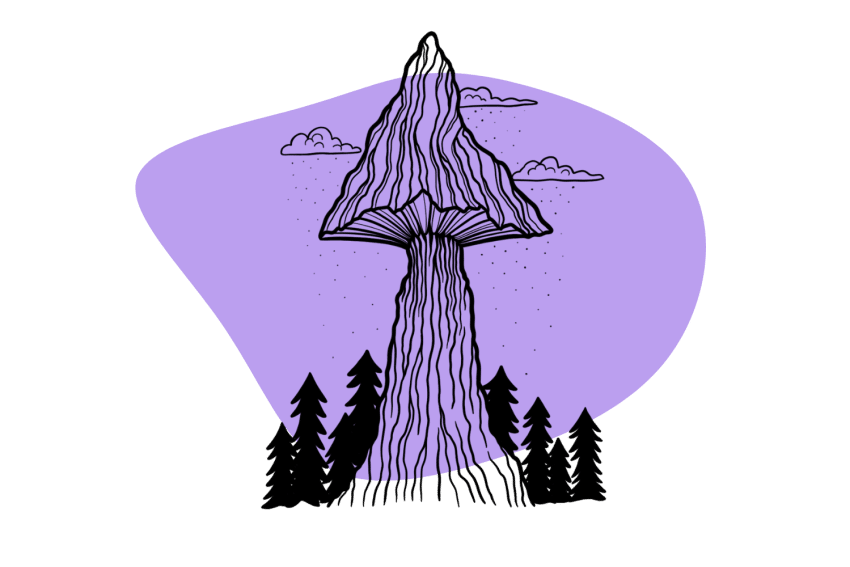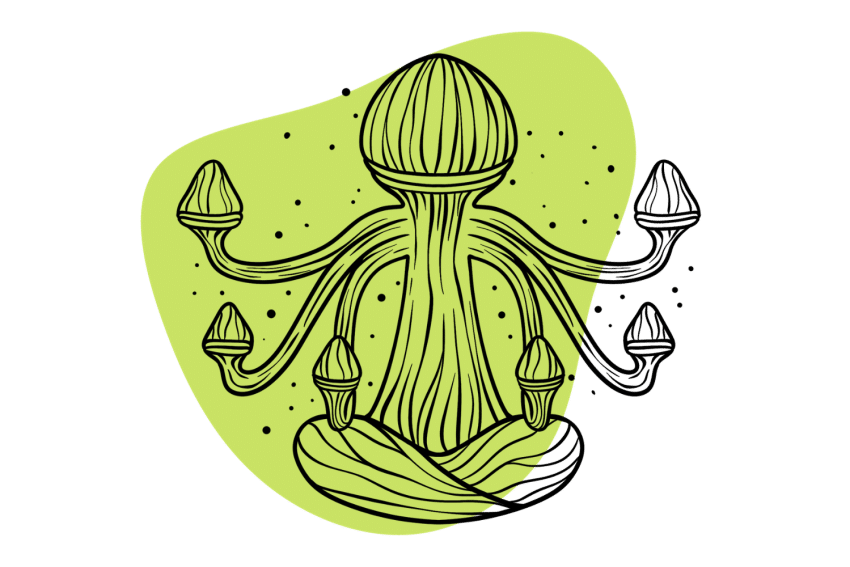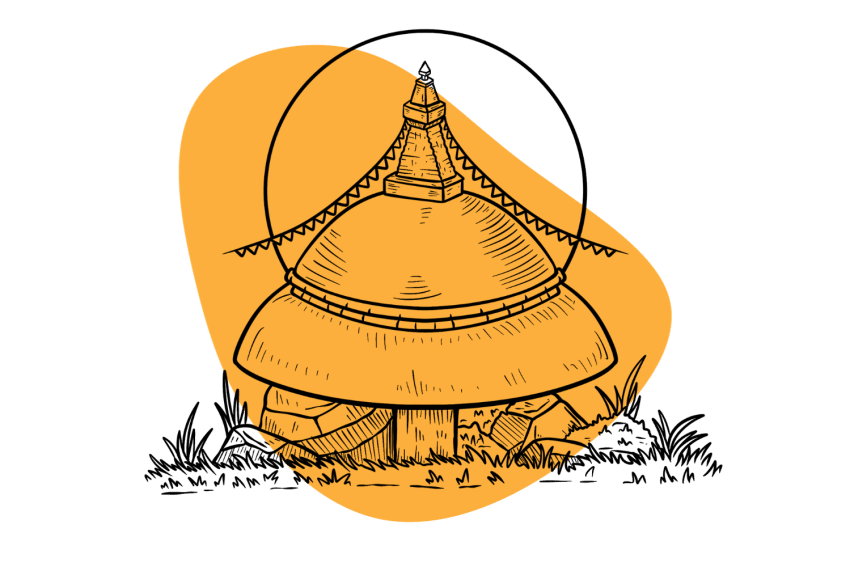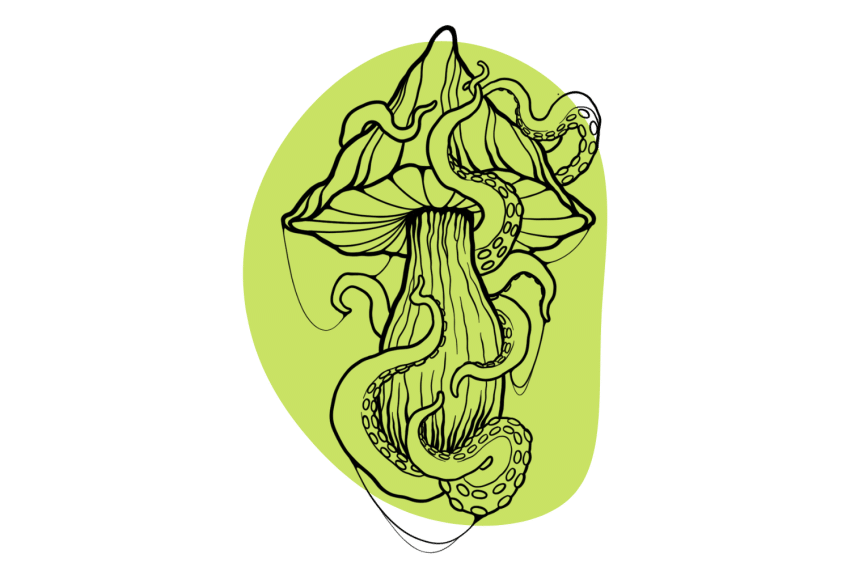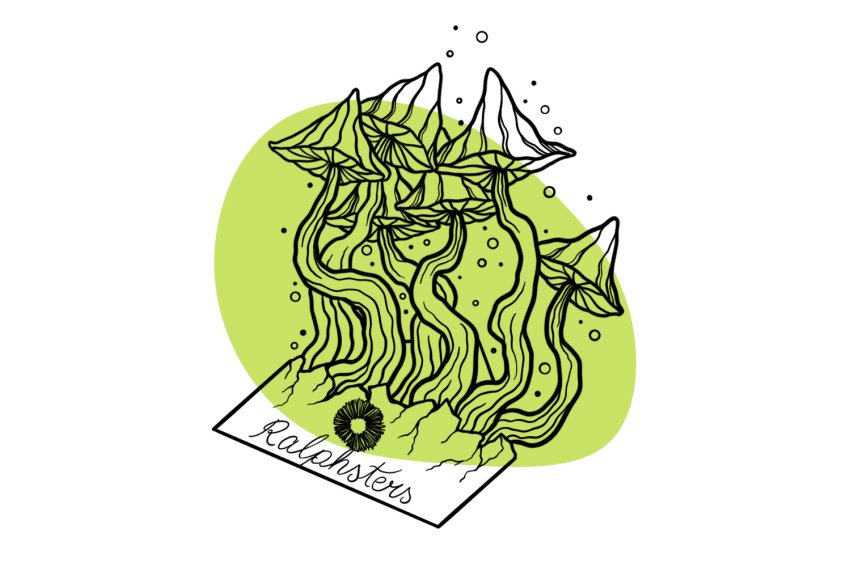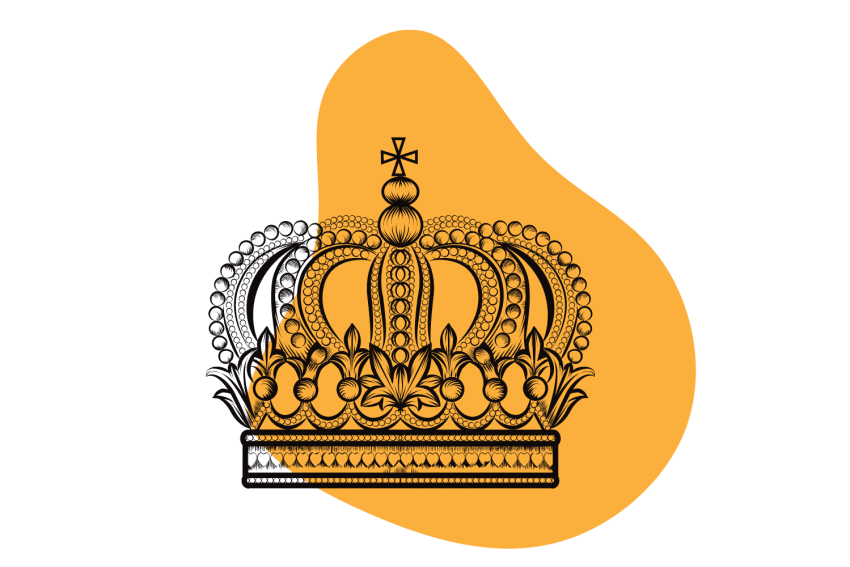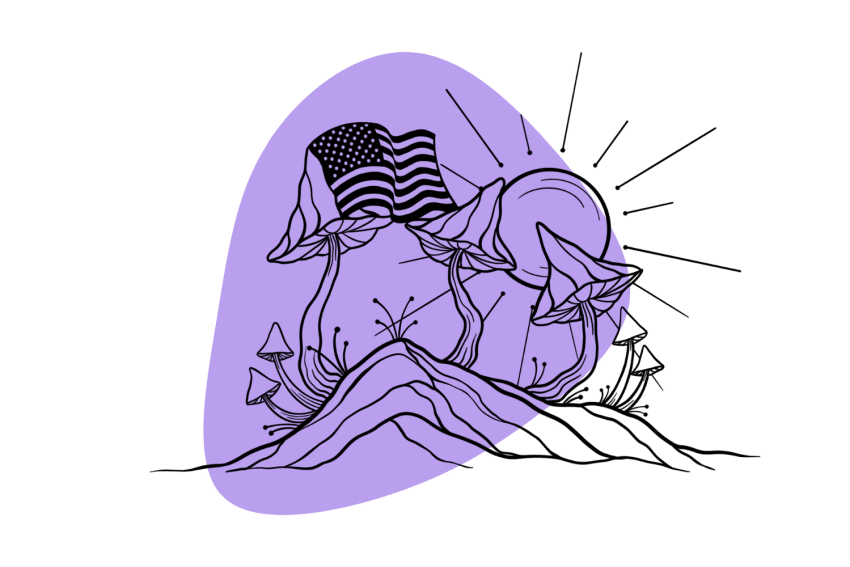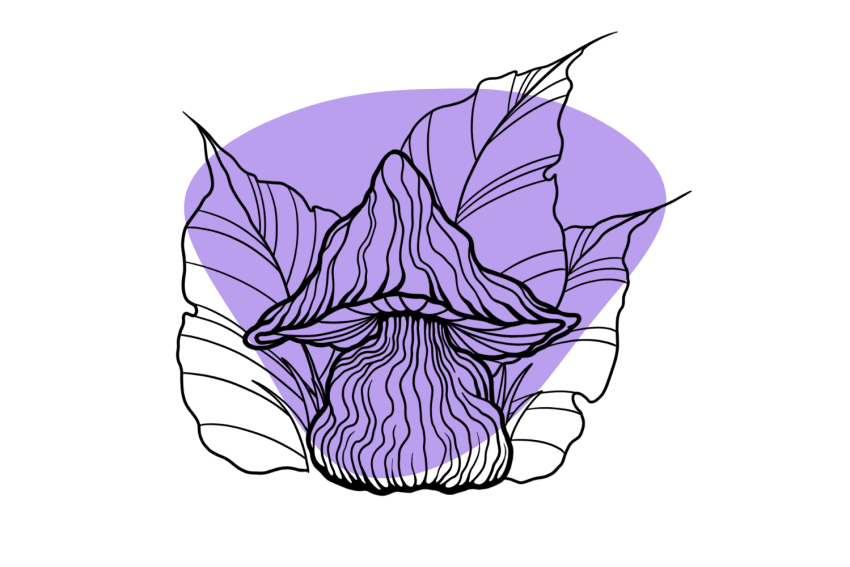Plantasia Mystery: An Unusual Strain of Psilocybe cubensis
Plantasia Mystery is a peculiar strain — it looks like a Psilocybe azurescens mushroom but grows like Psilocybe cubensis.
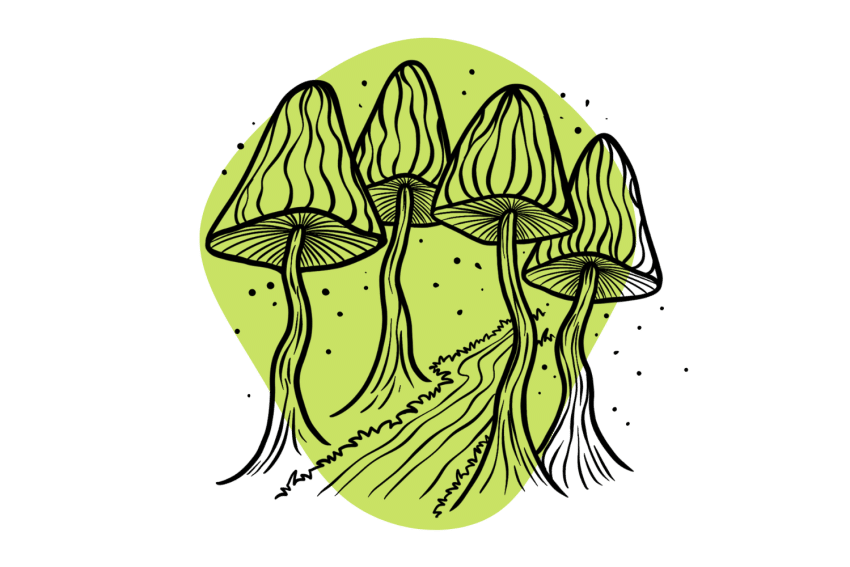
Plantasia Mystery is a strain of Psilocybe cubensisthat arrived on the scene sometime in the late 90s to early 2000s.
With above-average potency, Plantasia Mystery mushrooms pack a punch. Although we’re unsure of exact psychedelic tryptamine levels, it’s estimated that this strain produces a combined tryptamine level (psilocybin, psilocin, baeocystin, and other tryptamines) in the region of 0.90% to 1.80%.
Plantasia Mystery mushrooms are medium-sized and look like a “typical cube.” The caps are golden brown and bulbous when young — flattening out and becoming more saucer-shaped through maturity.
How these mushrooms are grown greatly impacts their appearance. When cultivated outdoors, the mushrooms can look extremely similar to Psilocybe azurescensmushrooms, only larger. A characteristic nipple tends to protrude from the caps, and they take on a more creamy-yellow coloration.
When cultivated in an artificial environment, they tend to look more like a typical P.cubensis strain, such as Colombian cubensis — some caps may still produce defined nipples.
This strain is adaptable to a variety of conditions and climates. It’s also relatively contamination-resistant and colonizes the substrate quickly — making it relatively easy to grow. Plantasia Mystery is a good pick for the amateur cultivator that doesn’t want to grow a typical beginner strain such as Golden Teacher.
Plantasia Mystery spore samples can be a little hard to come by, but those willing to seek them out will be greatly rewarded.
In this article, we’ll be delving into the mystery of this strain by looking into the following:
- The History of Plantasia Mystery
- The potency of the strain
- Where to buy Plantasia Mystery genetic samples
- How to cultivate Plantasia Mystery mushrooms
- A selection of strains that share similarities with Plantasia Mystery
I’ll also be answering a few frequently asked questions about Psilocybe cubensis mushrooms.
Plantasia Mystery Specs
| Potency | Above Average |
| Cultivation | Beginner |
| Species | Psilocybe cubensis |
| Substrate Recommendation | BRF (Brown Rice Flour) Cakes |
| Sold By | Ralphsters (🇺🇸) & Sporeworks (🇺🇸) |
History of the Plantasia Mystery Strain
There’s a lot of “mystery” surrounding the history of the Plantasia Mystery strain.
There’s a rumor that this strain is a cross between the two species Psilocybe azurescens and Psilocybe cubensis — this likely stemmed from its appearance. Although these shrooms can be compared to both species, the cross-cultivation of these two species is impossible — this is simply a strain of P.cubensis that coincidentally looks similar to P.azurescens.
There’s a rumor that the iconic mycologist Paul Stamets was handing out Plantasia Mystery mushrooms as an “Azure” at a mushroom conference in Mexico back in the early 2000s. This could be where the cross-cultivation rumor started. However, Paul hasn’t spoken up about this, and I find it unlikely that he would risk his career by doing this.
Supposedly, Plantasia Mystery originated from “The Grow Room” spore vendor — this vendor is no longer active. It’s unknown where exactly the first sample was collected from, but apparently, it was collected by a mycologist by the name of Milo Zverino from Ban Saket in Thailand back in 2000.
The strain available today likely stems from the sample collected in 2000. However, there are earlier mentions of the Plantasia Mystery strain from the late 1990s.
Although the history of this strain is blurry, and there are several rumors surrounding its origins and genetic makeup, we’re pretty certain it came from Thailand. There are hundreds of Psilocybe cubensis strains, many of which were collected from Southeast Asia.
Plantasia Mystery mushrooms share several traits with other Southeast Asian strains, such as the Pink Buffalo strain from the island of Koh Samui.
Plantasia Mystery Potency & Psilocybin Content
The Plantasia Mystery Strain has above-average potency. We’re yet to see this strain in Oakland Hyphae’s Psilocybin Cup, but we have a rough idea of its psychedelic tryptamine levels.
Plantasia mystery mushrooms have the potential to produce anywhere from 0.90% to 1.80% combined psilocybin and psilocin.
It’s important to note that any Psilocybe cubensis strain, regardless of genetics, is highly variable. How the mushrooms are grown can greatly affect the potency of the resulting shrooms. Problems with contamination, fluctuations in temperature and humidity, changes in light levels, and other stress factors can impact psilocybin and psilocin production.
Where to Buy Plantasia Mystery Spores
Finding spore samples can be a little tricky with this one. You’ll find it on a lot of the older spore vendors like Ralphsters or Sporeworks.
Other reputable spore and growkit vendors that carry Plantasia Mystery or similar strains:
- If you live in the United States — MYYCO, Spores 101, Miracle Farms
- If you live in Canada — Spores 101, Sporeslab, Planet Spores
- If you live in Europe — The Magic Mushrooms Shop (🇪🇺), Shiny Spores (🇬🇧)
→ View all spore vendors & grow kit suppliers
Plantasia Mystery Genetic Relatives
Plantasia Mystery is believed to have stemmed from Ban Saket in Thailand. Although we’re not 100% sure whether Southeast Asia is its true point of origin, the strain does share several similarities with strains collected in the area.
Here are a few of Plantasia Mystery’s potential genetic relatives:
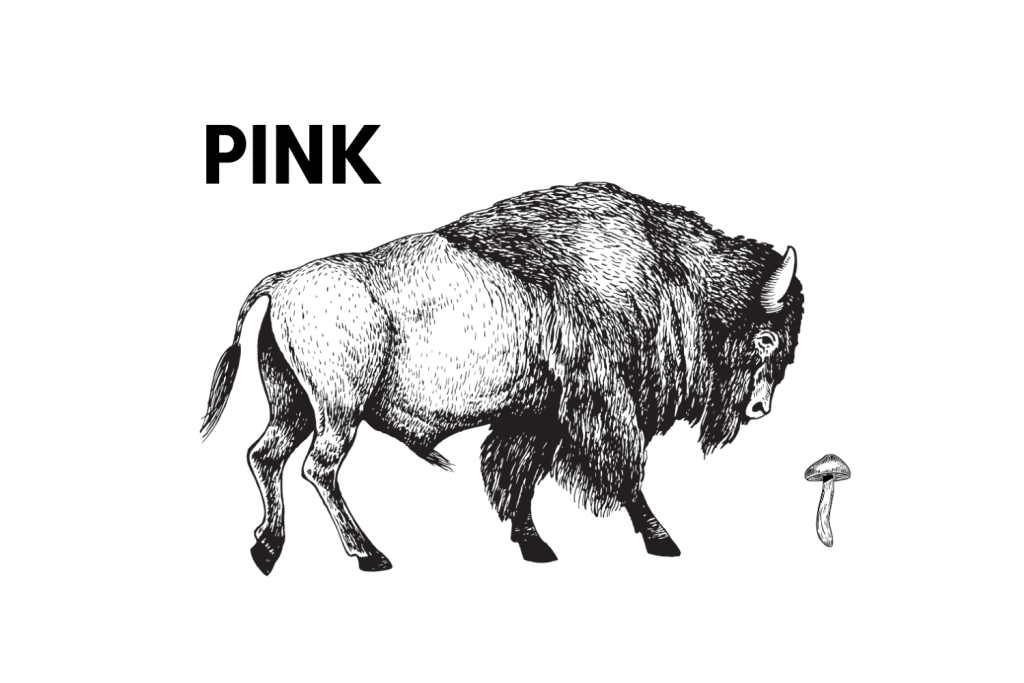
1. The Pink Buffalo Strain
Pink Buffalo was originally collected from the island of Koh Samui in Thailand. It gets its name from the substrate it was picked from — a patch of manure from a literal pink buffalo.
This strain has large, broad caps that become saucer-shaped through maturity. Younger shrooms are more bulbous and have a distinct conical nipple in the center of the cap, similar to Plantasia Mystery.
Pink Buffalo shrooms have above-average potency and produce psilocybin levels similar to Plantasia Mystery. Both strains are contamination resistant, quick to colonize, and easy to cultivate at home.
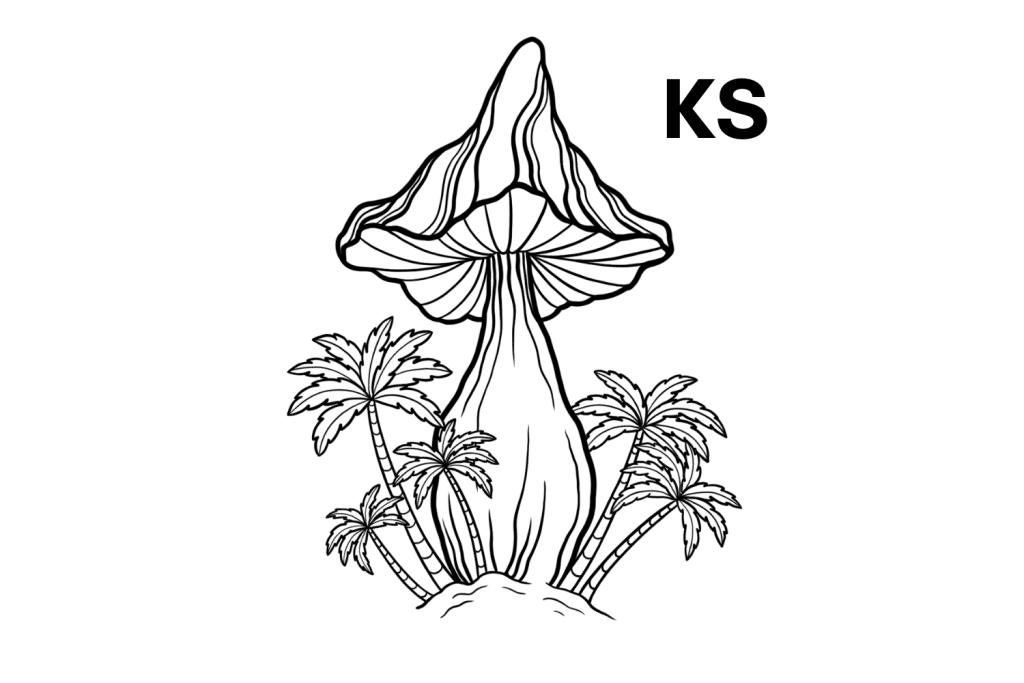
2. The Koh Samui Strain
The Koh Samui Strain is famous for producing “fatasses” — short, fat mushrooms. This is a trait that Plantasia Mystery has been noted for. However, although Plantasia Mystery is capable of producing fatasses, the appearance of the fruiting bodies can vary quite drastically.
Koh Samui has average potency, with some samples entered into the Oakland Hyphae Psilocybin Cup producing psilocybin levels over 0.80%.
This strain is easy to cultivate thanks to its resilient nature and ability to grow in an unoptimized environment. Spore samples are widely available from a variety of different spore vendors across the globe.
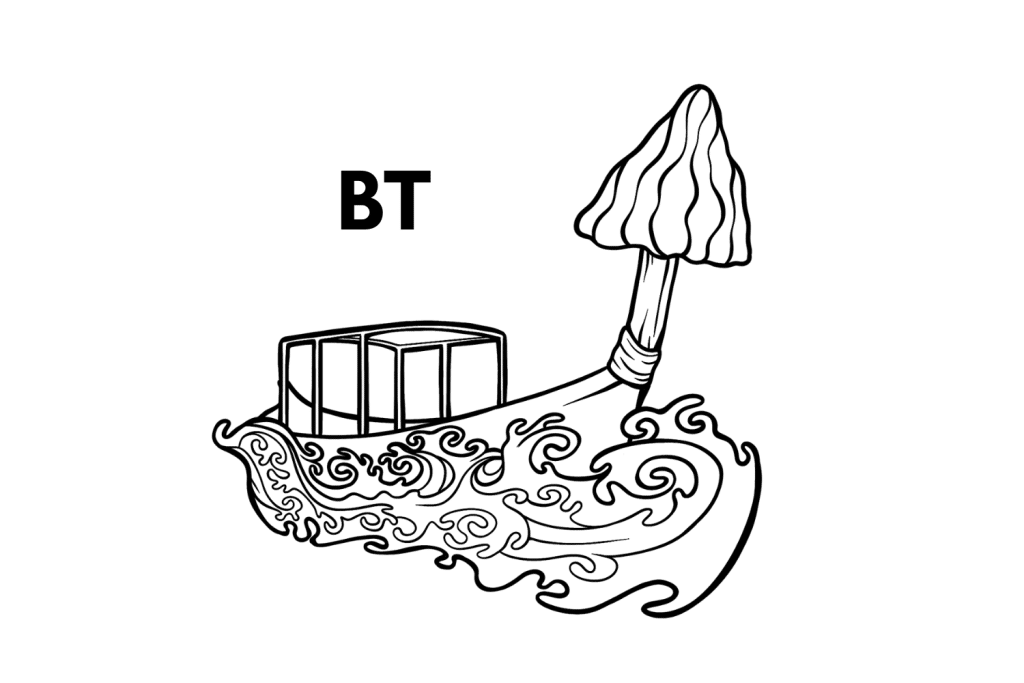
3. The Ban Thurian Strain
The Ban Thurian strain is named after its place of discovery — Ban Thurian on the island of Koh Samui in Thailand. The first sample was discovered and collected by John “Mushroom” Allen during his travels through Southeast Asia in the 1990s.
This strain produces relatively average-looking mushrooms with average potency. However, the strain is renowned for its fast colonization speed, contamination resistance, and relatively large mushroom size.
Ban Thurian mushrooms share several growth characteristics with Plantasia Mystery shrooms, but they are notably less potent and more stable in terms of mushroom size, shape, and appearance.
How to Grow Plantasia Mystery Mushrooms
Out of the many species of psychedelic mushrooms, Psilocybe cubensis is one of the easiest to cultivate in an artificial environment. Although simpler to grow than other species, some P.cubensis strains are easier to grow than others. Plantasia Mystery is one of those easier strains.
Plantasia Mystery mushrooms can be grown in the same way as other psychedelic and gourmet mushrooms. The mycelium is fast to colonize, and the mushrooms pin quickly. However, it seems to produce more pins than can be supported, which means a lot of early aborts.
The easiest way to grow Psilocybe cubensis mushrooms is by using a cultivation technique known as PF-Tek (Psilocybe Fanaticus Technique).
PF-Tek is relatively simple and can be picked up easily by those with little to no mushroom cultivation experience. You can learn how to grow magic mushrooms using this technique by reading this in-depth guide: How to Grow Magic Mushrooms.
For now, here’s a brief rundown of the process:
1. Preparing the Growing Medium
First, you must prepare the growing medium — the substrate on which the mycelium will form.
Plantasia Mystery can be grown on pretty much any substrate. The best substrate to start with is BRF (brown rice flour) cakes. This is a combination of brown rice flour, vermiculite, and water. Once the substrate is created, several mason jars are to be filled and sterilized using a pressure cooker.
The substrate-filled jars should be “cooked” for around 30 minutes and allowed to cool completely before the next step.
2. Inoculating the Substrate
Once the substrate-filled jars have been sterilized, they must be inoculated with spores. The best way to do this is with a sterile spore syringe filled with Plantasia Mystery spores.
The spores are injected two to three centimeters into the substrate in a completely sterile environment — if any bacteria enter the growing environment, they could outcompete the mycelial growth. Once inoculated, the jars should be sealed with lids and a layer of tin foil.
3. Incubating the Jars
Once the jars have been inoculated, they’ll need to be placed in a simple incubator (you can learn how to make one in the article linked above) at a temperature of between 20 to 28 ºC (68 to 82 ºF).
After two to three weeks, the substrate inside the jars should be completely colonized with mycelium — you’ll see this as a white thread-like organism.
4. Fruiting the Mycelium Cakes
Once the substrate-filled jars are full of mycelium, they’re ready for fruiting. The cakes can be removed from the jars and placed inside a fruiting chamber (more on this in the guide above) until mushrooms begin to appear.
After a few days, you’ll see small mushrooms growing from the mycelium cakes — once mature but before sporulation, they can be harvested and dried for storage.
Other Unusual Strains of Psilocybe cubensis
Plantasia Mystery is a “mysterious” strain of Psilocybe cubensis. The fruits produced by Plantasia Mystery can vary from flat and saucer-like to bulbous and pointy like an Azure. It’s a desirable strain for those looking for something a little different to grow rather than the “average-looking cube.”
If you’re searching for a strain that’s not “your usual cube,” here are some other strains to check out:
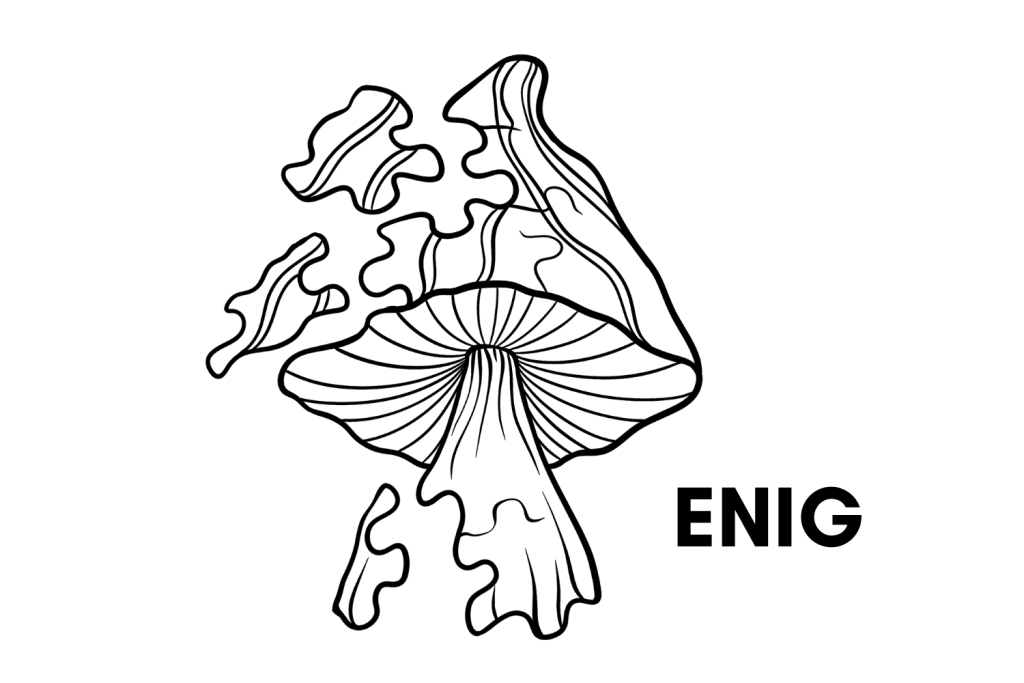
1. The Enigma Strain
Enigma is a peculiar strain. It doesn’t produce typical mushrooms. Instead, it produces truffle-like fruiting bodies that grow above the ground. The fruits produced by Enigma are neither similar to truffles nor typical magic mushrooms. The fruiting bodies look more like reef corals rather than psilocybin-containing mushrooms.
Enigma has been submitted into several Psilocybin Cups over the years with average psilocybin levels of around 0.76. Total tryptamine levels averaged out at around 0.88%, but some samples have produced levels as high as 1.67%.
If you’re looking for something a little different to grow, you can’t get any more unusual than Enigma. The fruits take some time to mature, though — sometimes up to four months.
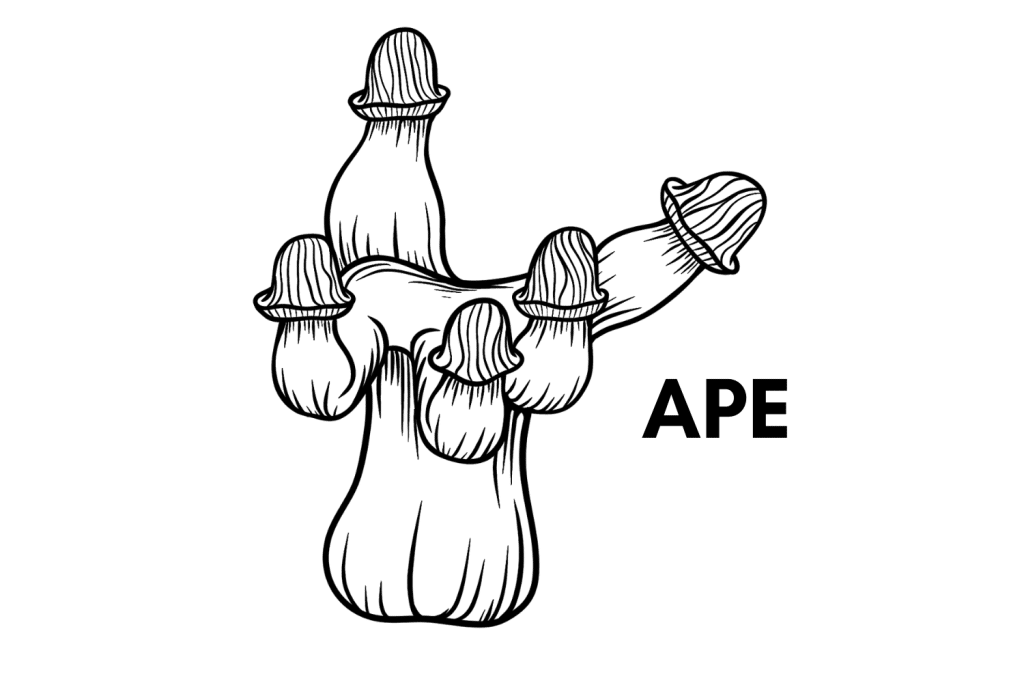
2. Albino Penis Envy
Albino Penis Envy is a non-pigmented version of the already unusual original Penis Envy strain. This strain is just as potent as the classic strain and retains its famous phallic shape. Over the past four Psilocybin Cups, over 30 samples of Albino Penis Envy have been entered. The average psilocybin content is around 0.93%, but some samples have produced up to 2.34%.
This is a popular strain, and spores can be purchased from a variety of vendors across the globe. It’s relatively easy for the seasoned mushroom cultivator to grow. However, it’s prone to aborts and can be challenging for the complete beginner.
If you’re looking for an unusual-looking strain with almost unbeatable potency, Albino Penis Envy is the one for you.
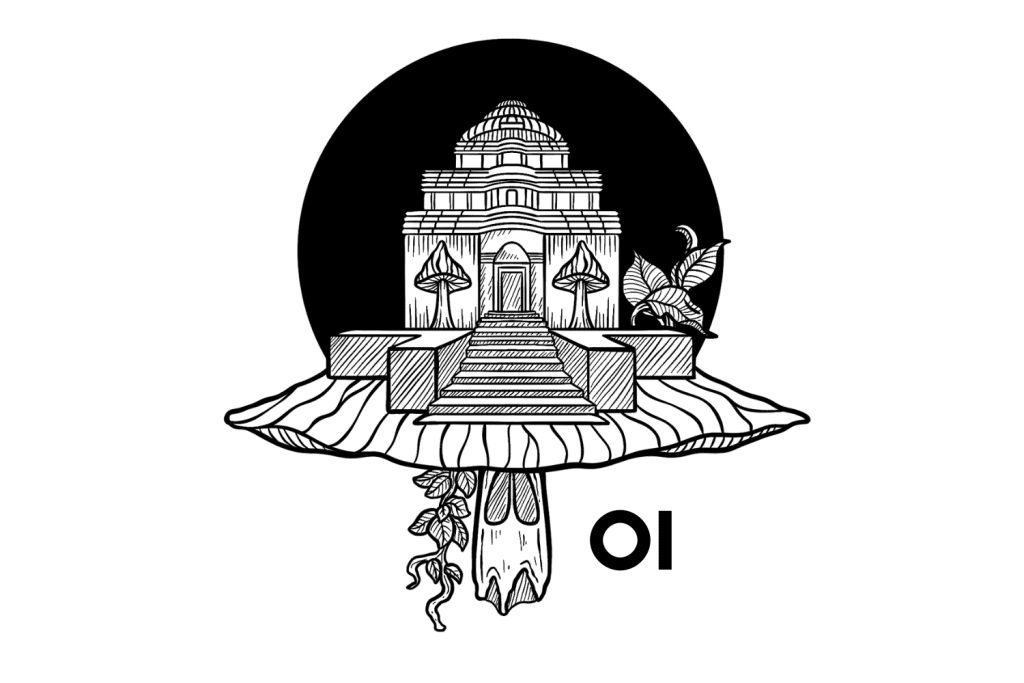
3. The Orissa India Strain
The Orissa India strain doesn’t look unusual at first glance, but the shrooms it produces can be impressively large. This strain once held the title for the largest cultivated Psilocybe cubensis mushroom, but it has since been overtaken by a South American cubensisgrown by the Shroomery user “P. Menace.”
The average Orissa India mushroom can produce psilocybin levels as high as 1.50%. However, there are some claims that the strain is capable of producing levels as high as 3.00%.
This is a relatively easy strain to grow, but preparations must be made to ensure the fruits don’t topple over under their own weight. If you’re looking to grow an unusually large Psilocybe cubensis shroom, this is a good option.
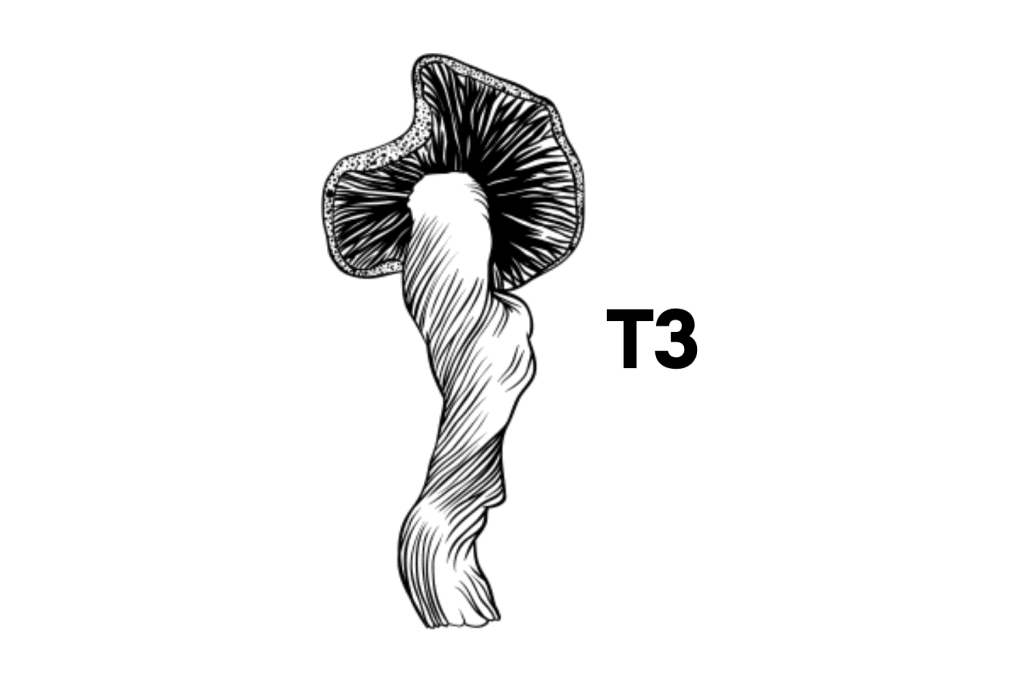
4. The T3 Strain
The T3 strain was discovered by John Allen during his travels through Southeast Asia in the 90s. It closely resembles the Koh Samui strain, but rather than producing “fatasses,” the mushrooms have three distinct growth patterns. The size and shape of the mushrooms change from flush to flush.
This isn’t the strain for the cultivator looking to grow large quantities of magic mushrooms, but it’s a fantastic option for the connoisseur that wants to grow something unusual.
The potency is average — producing psilocybin levels between 0.60% and 0.90%
Frequently Asked Questions About Psilocybe cubensis Mushrooms
1. How Many Strains of Psilocybe Cubensis Exist?
There are hundreds of distinct strains of Psilocybe cubensis. It’s hard to put an exact number on the number of variants because new strains are appearing all the time.
Some strains occur naturally and are collected as wild samples. These samples are then stabilized, and the resulting spores are distributed through online vendors.
Other strains, such as Tidal Wave, White Rabbit, and Trans Envy, are created through cross-cultivation. This is where two strains with differences in characteristics are combined to create a new variant with traits from both mother strains.
2. What’s The Most Popular Psilocybe cubensis Strain?
The two most popular strains of Psilocybe cubensis are Penis Envy and Golden Teacher. These strains have been circulating the market for decades.
Penis Envy is popular for its unrivaled potency and unique looks — making it a favorite among seasoned mushroom users.
Golden Teacher is popular for its resistance — making it a favorite choice among beginner growers.
3. What’s Considered Average Potency for a Psilocybe Mushroom?
Most Psilocybe cubensis strains — aside from those that feature Penis Envy genetics — have similar potency. The average potency of a typical strain is between 0.50% and 0.90% of total psychedelic tryptamines.
Psilocybe cubensis isn’t the only mushroom species that produce psilocybin, but it is the easiest to cultivate in an artificial environment. There are several other species of psychedelic mushrooms, some of which are remarkably potent.
Psilocybe semilanceatais a favorite species in Europe — it can’t be successfully cultivated at home, but samples from the wild have shown psilocybin levels of up to 2.37%.
Psilocybe azurescensis another wild species with remarkable potency. These mushrooms can be cultivated in some circumstances but require much more care than P.cubensis. The typical P.azurescens mushroom produces somewhere in the region of 1.80% psilocybin.
Psilocybe cyanescens (the Wavy Cap) is a wild species that can be cultivated outdoors in mulch or wood chip beds. This species can be extremely potent — producing around 1.84% psilocybin and a staggering 1.81% psilocin.

